Ask Ethan #70: Does the Universe have a center?
If everything began with a Big Bang and is expanding, is there a center?
“I want to stand as close to the edge as I can without going over. Out on the edge you see all the kinds of things you can’t see from the center.” –Kurt Vonnegut
Every little bit of time that passes raises more and more questions for each of us. Why not give everyone a shot at having their biggest ones answered? Each week, I encourage you to send in your questions and suggestions, and I’ll pick an intriguing one to showcase to the world. This week, the honor goes to Eric Vincent, who asks:
Where is the center? For some time, given the disposition of matter, I refuse to believe in a single big bang that started the universe. The article assumes that planet earth is the center of the universe. Isn’t it just as likely that gravity is wining all the time and that several locations in the universe have enough matter to pull toward a center, with no need to create a term that currently has no evidence(dark energy). I’m certainly not an expert in the field, so I would like to hear if and why I am wrong.
There are a lot of misconceptions that people have when it comes to the expansion of the Universe, the Big Bang, dark energy, and the idea of a “center.” Let’s see what we can do to help clear things up!
I want you to start by thinking about our planet — about Earth — and the journey it takes through space. The image above was taken over a 24 hour period by the Messenger spacecraft in 2005, as it flew by our world on its way to Mercury. I want you to think about Earth because — just a few human lifetimes ago — there were a great many people who thought that the Earth was stationary in space, at the center of the Universe, and not rotating nor orbiting our Sun.
We’ve come a long way since then.
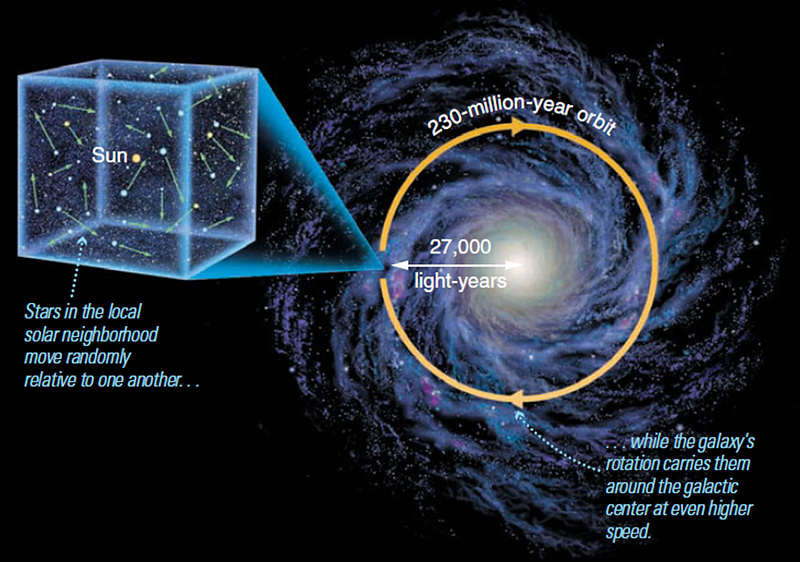
Not only is the Earth not the center, and not stationary, but neither is anything in our Solar System. The Earth and the other planets — and the Sun, for that matter — orbit their mutual center-of-mass, not any one particular fixed point. That center of mass then flies through space, moving through the galaxy in an orbit that looks a little different than some suspect videos you might have seen.
Instead, our entire Solar System remains in a constant plane, with the Oort cloud as a sparse ellipsoid around it, as we move around the center of the Milky Way in a giant ellipse.
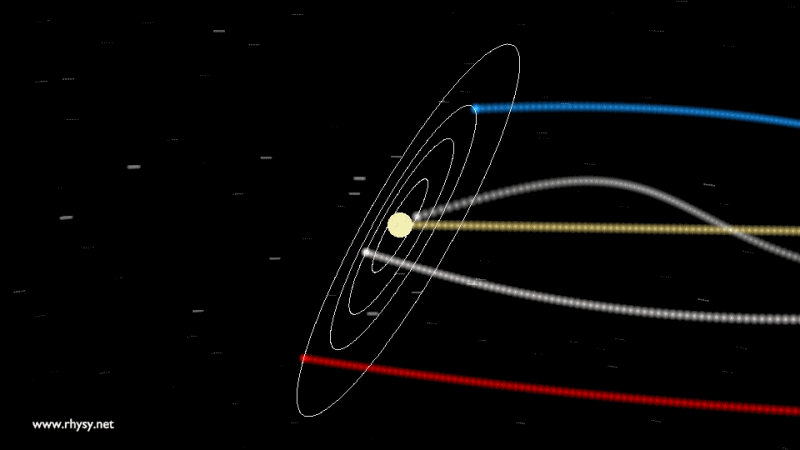
But that’s not all! The Milky Way itself isn’t stationary, and neither is even its center. Because not only is our galaxy rotating, but it’s also moving through space. There are gravitational sources all around us:
- Other galaxies, small and large,
- Groups and clusters of galaxies,
- Intergalactic filaments of gas and dark matter,
- And cosmic voids that relatively repel gravitational clumps like our own.
In our own local neighborhood, not only the Milky Way, but all the galaxies, groups and clusters are moving relative to one another.
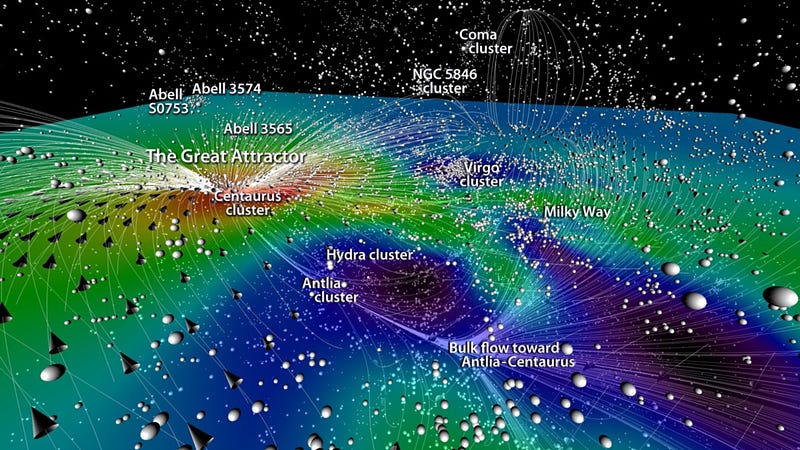
But what’s even more important than that isn’t these local motions, but rather a cosmic one.
It’s the observation that, on the largest scales, the galaxies aren’t simply moving due to the influence of gravitation, but rather that there’s an overall cosmic expansion affecting everything in the Universe. The way this works is not intuitive to most people. When we think of something expanding, we tend to think about something like an explosion, where all the pieces of it get farther away from one another. We have plenty of explosive events like this in space, such as a (type II) supernova explosion that recycles the burned nuclear fuel from a star back into the interstellar medium.
https://www.youtube.com/watch?v=eE8QkBlyf5k
Sure, all the different pieces of it expand away from one another, but this is because it’s due to an explosion, not because space itself is expanding. What I’m telling you is that if this is in any way, shape or form related to your picture of “the Big Bang” or “the expanding Universe,” you need to get that out of your head right now.
Instead, I want you to think of space itself as the surface of a balloon. Not the three-dimensional “this is a balloon in space,” but the two-dimensional surface of the balloon itself. And I want you to imagine this surface has coins glued to it. This balloon is going to expand — and I don’t care whether it’s because it’s being blown up or whether the surface is simply being stretched — but I want you to consider each coin as a galaxy, or in our case, an observer.
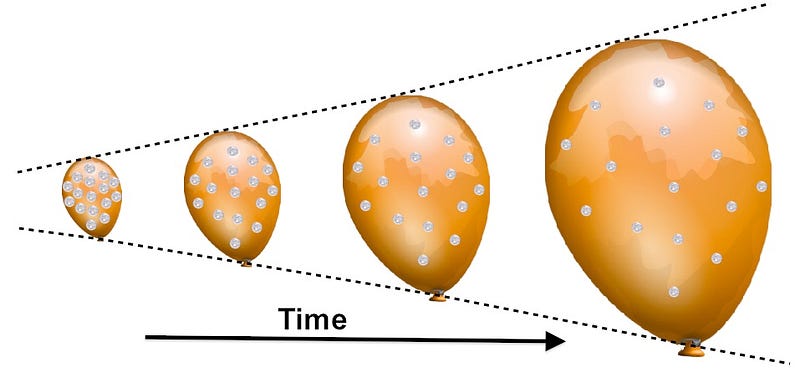
From the point of view of any galaxy, all the other galaxies are receding from you. The ones that are farther away appear to recede faster, while the ones that are closer to you appear to recede less quickly.
But take a look at this from the point of view of any galaxy, and you’ll find the exact same thing. In the context of General Relativity in an expanding Universe, not only is there no center, but there is no preferred observer, there is no galaxy that’s “privileged,” and there is nothing to “pull towards” as far as gravitation goes.
There is, however, an overall race that’s occurring that governs the expansion.
It’s a race between gravitation and the expansion, a race that started off at the Big Bang, or the moment the Universe could first begin to be described by a hot, dense expanding state, where the expansion rate dropped and the Universe cooled as time went on.
The Big Bang was not an explosion that had a center, nor a single location that could be described as the origin of our observable Universe. Rather, as far as we can tell, space became filled with matter and radiation in a hot state all at once, everywhere, and that’s what we call the Big Bang.
As far as how the Universe is expanding, that’s governed by what’s in it, and different regions have different amounts of stuff in it. That’s why, in the early Universe, we see fluctuations in the cosmic microwave background.
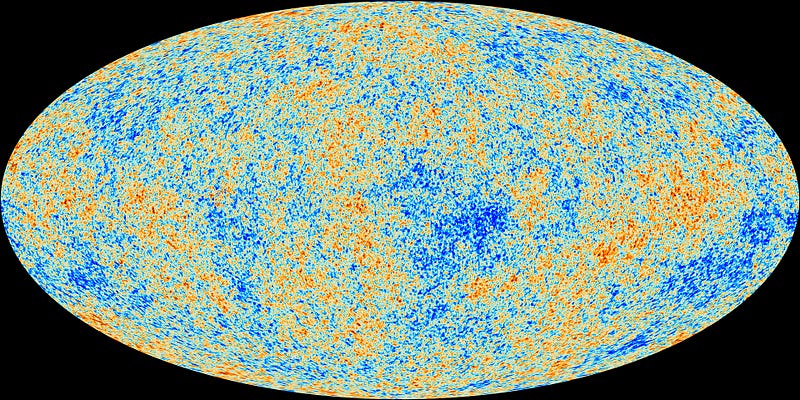
These “hot spots” (in red) and “cold spots” (in blue) correspond to places that have slightly less or more matter than average. The ones that have more matter will grow into galaxies, groups or even clusters of galaxies, while the ones that have less than average will not, with the largest underdense regions giving up all their matter and becoming great empty, cosmic voids.
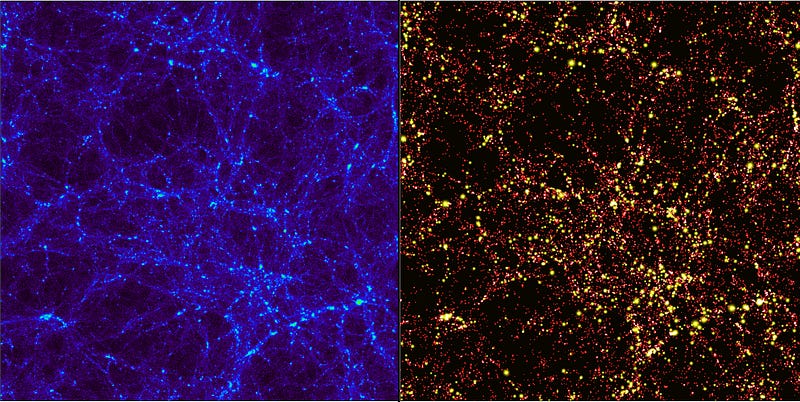
The largest overdense regions can defeat the expansion locally, forming regions many thousands of times the mass of our Milky Way. But on the largest scales, not only does expansion win, but the expansion comes to be dominated not by matter or radiation, but by dark energy, which is the only way to explain the observed expansion rate today in the context of General Relativity.
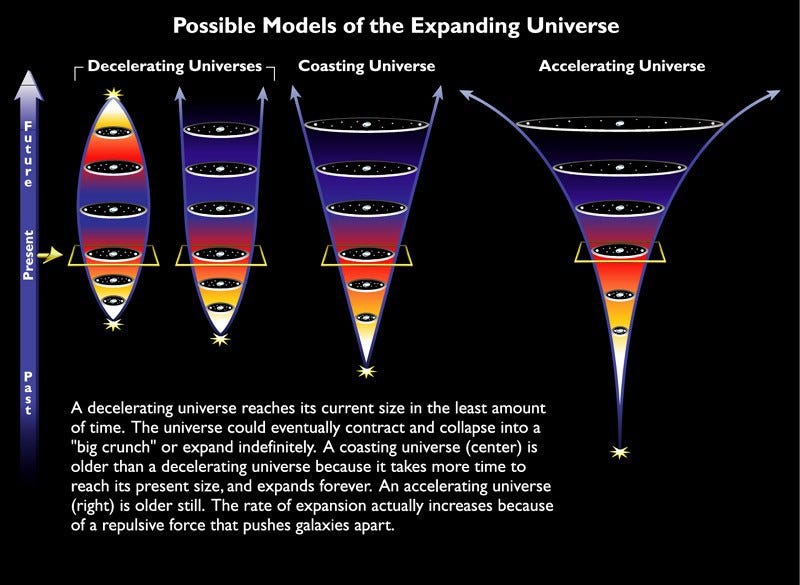
So to recap: the Big Bang happened everywhere in our Universe at once, all locations experience the expansion roughly the same, the imperfections in density are what lead to galaxies, groups and clusters of galaxies as well as cosmic voids, and dark energy has revealed itself to us through the accelerated expansion rate of the Universe.
Eric is not the only one to ask questions like this, but I hope this comprehensive answer takes care of it for everyone who’s curious about it, and that you understand the expanding Universe, the Big Bang and how we came to be just a little better. Of course, if you still have questions and suggestions for next week’s Ask Ethan, go ahead and send them in! You never know, the next answer might be exactly what you needed!
Leave your comments at the Starts With A Bang forum on Scienceblogs!





